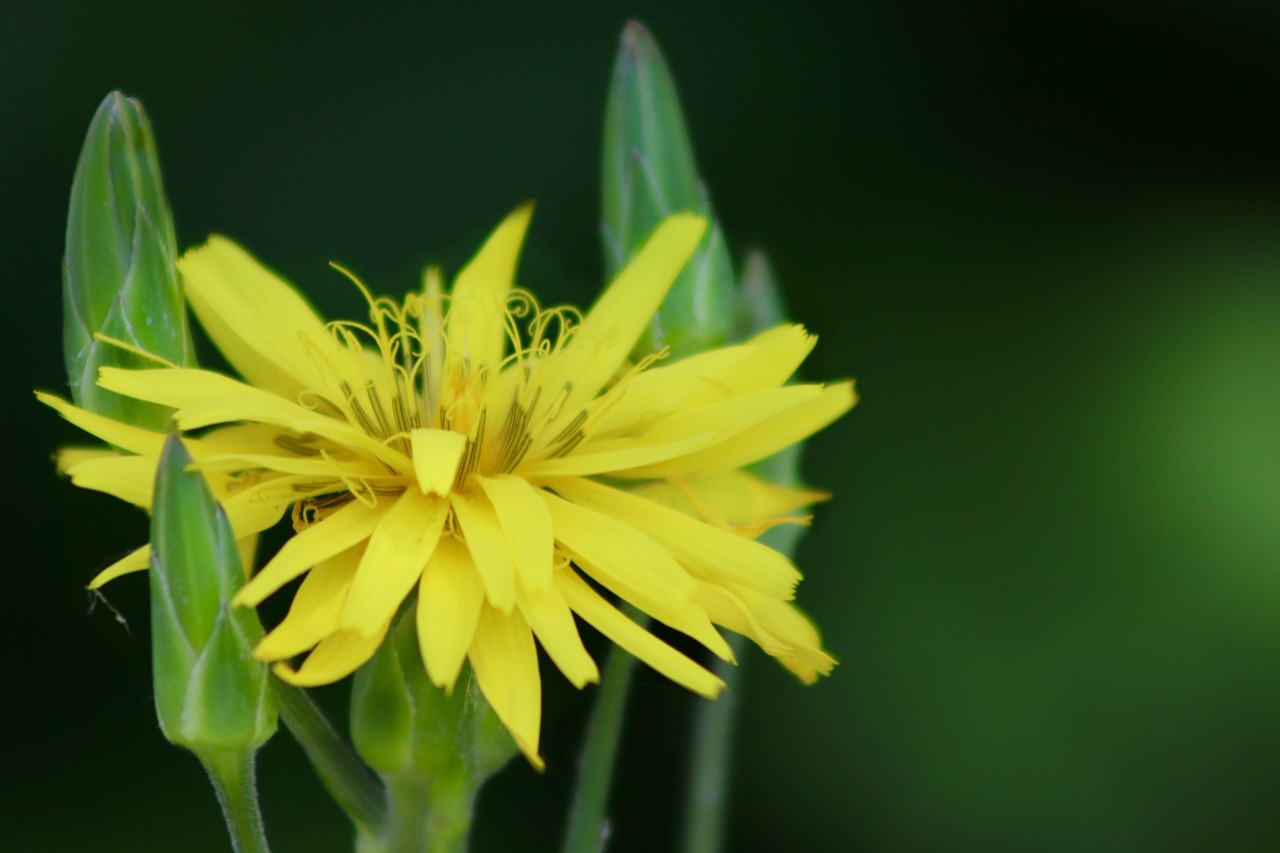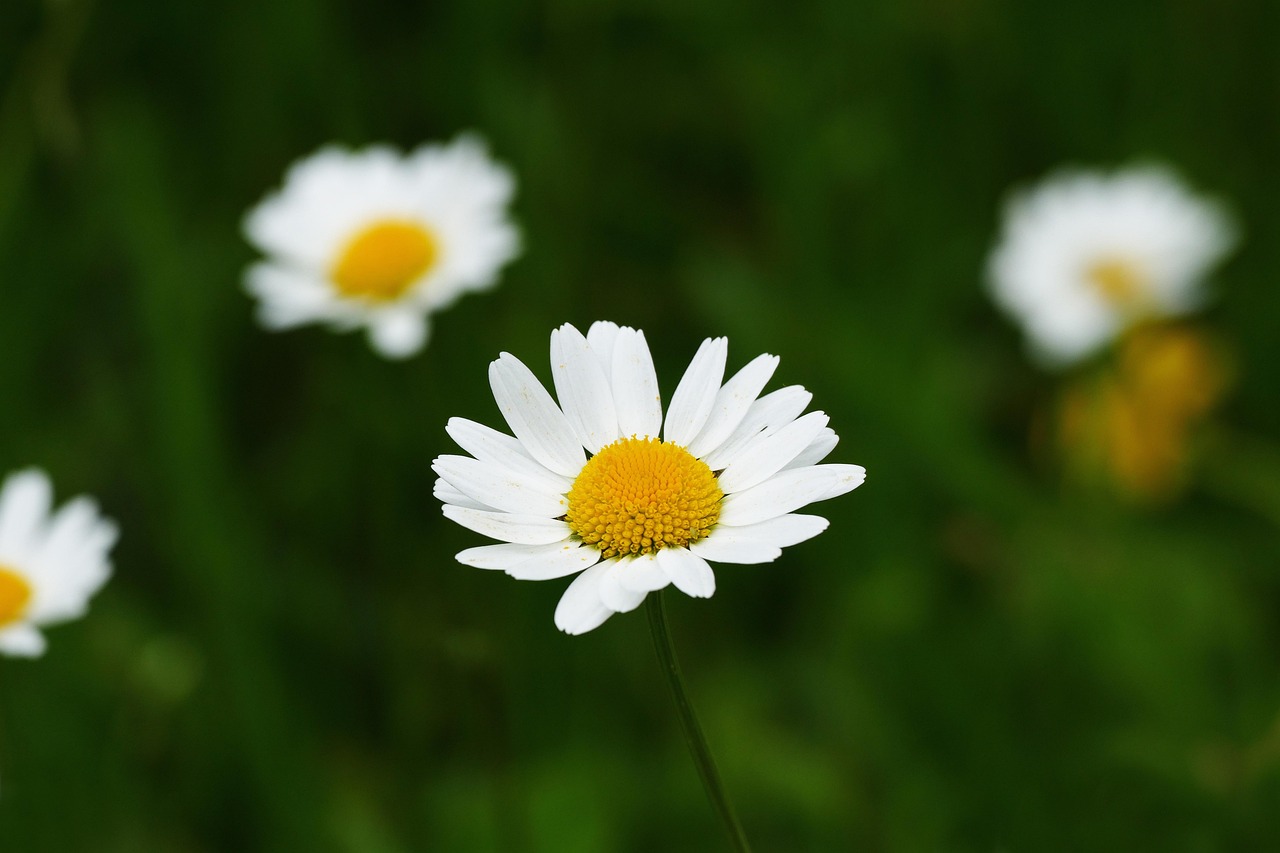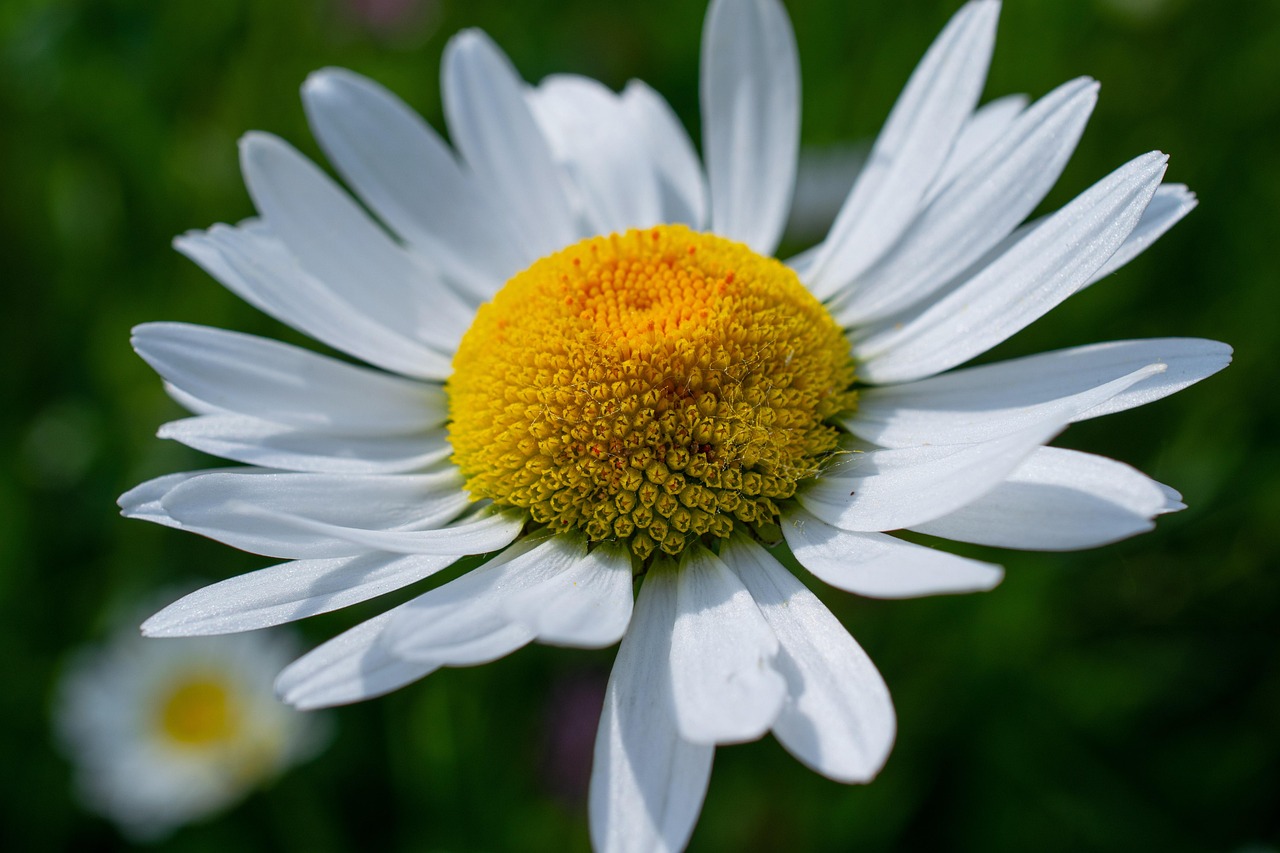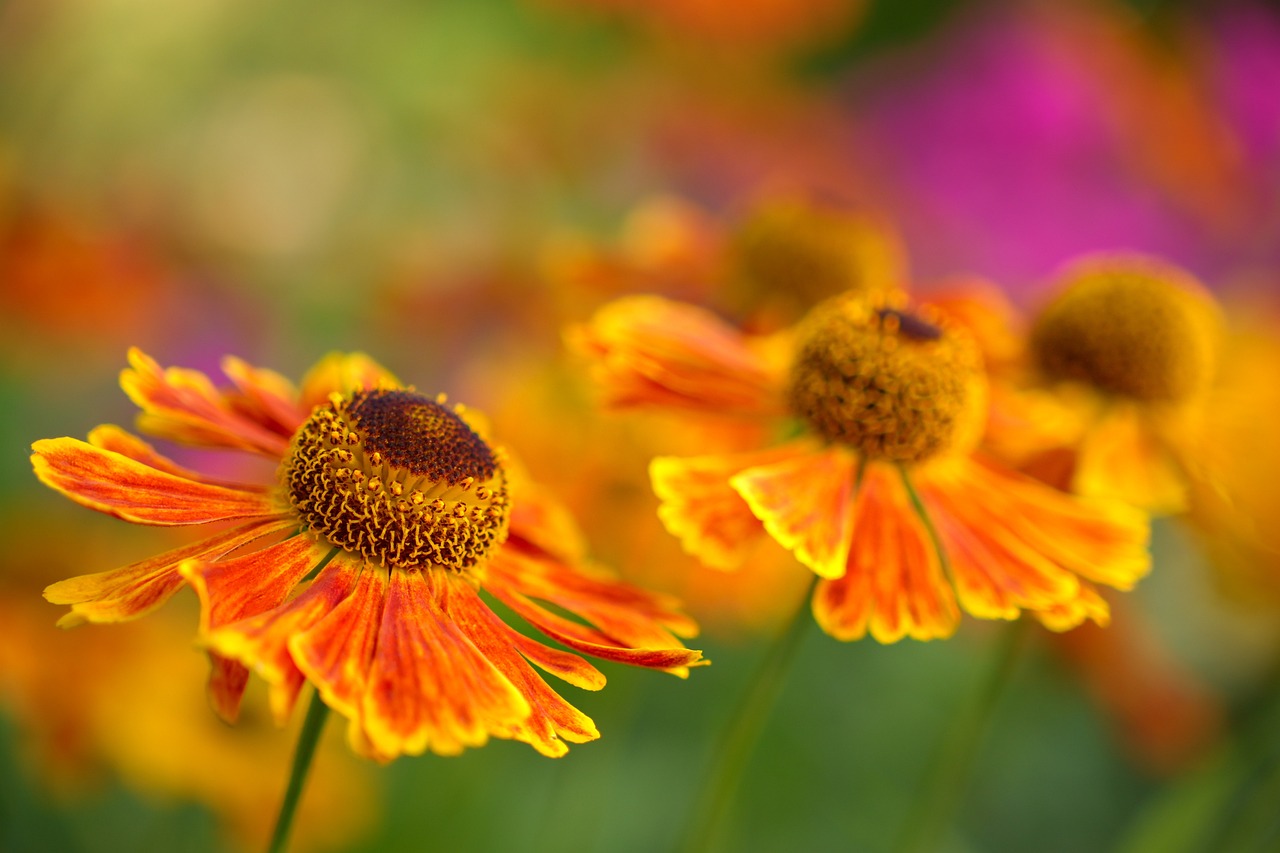Chamomile | A Gentle White Flower that Accompanies European Life
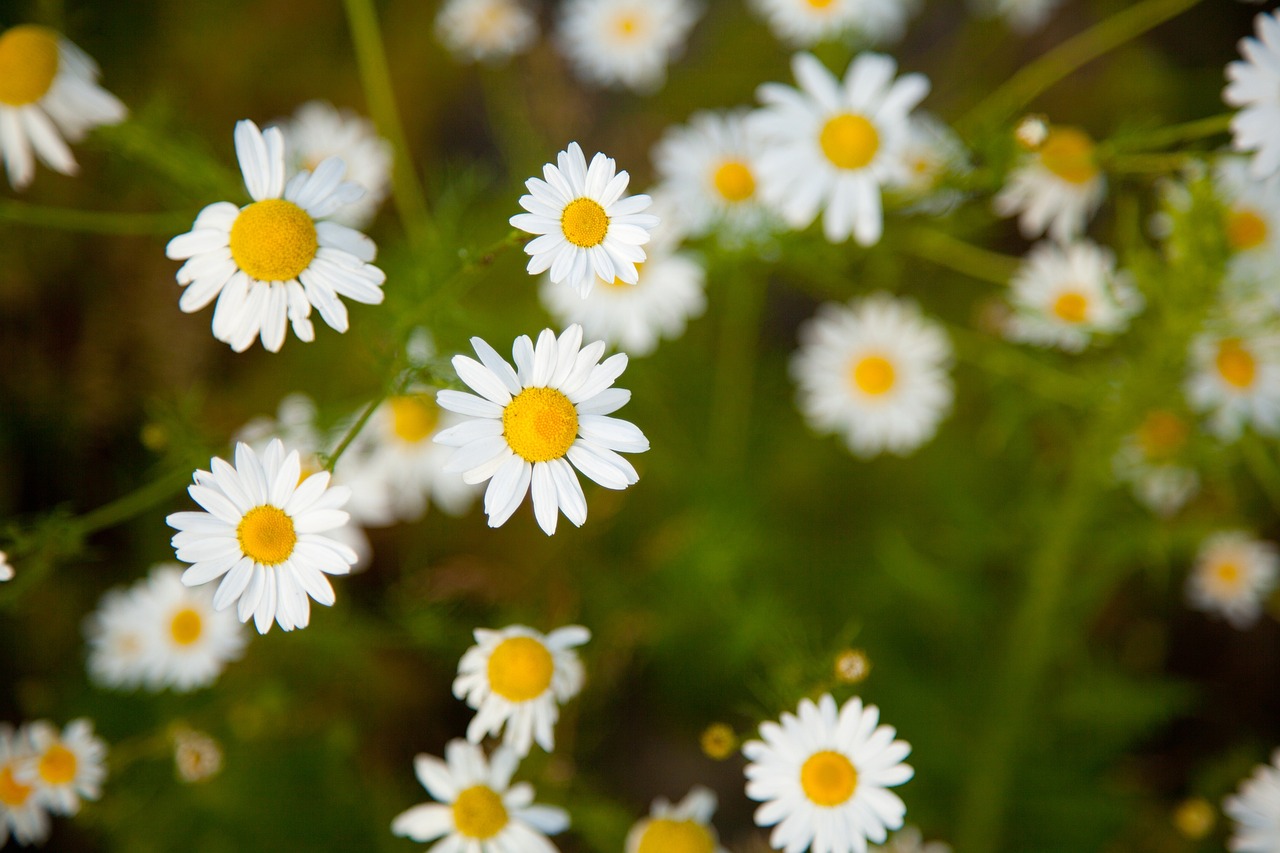
Chamomile is a plant distinguished by its small, delicate white flowers, cherished not only for their beauty but also for their distinctive fragrance.
By planting it in gardens or flowerbeds, I can create a natural atmosphere, a scene often seen in European landscapes.
In this article, I will explore the charm of chamomile, from its basic information and cultural background to gardening tips.
Basic Information
- Scientific name: Matricaria chamomilla (German chamomile) / Chamaemelum nobile (Roman chamomile)
- Family: Asteraceae
- Origin: Europe and Western Asia
- Appearance: Chamomile features daisy-like white petals with a yellow center. Its compact height of about 30–60 cm gives it a natural, wildflower-like charm. The finely divided leaves are soft green, creating an overall delicate and airy impression.
- Blooming season: Mainly from May to August. As it prefers cool climates, it blooms most beautifully in the mild seasons of spring and early summer.
Cultural Characteristics
Chamomile has a long history in European culture and carries meanings such as “calmness” and “patience.”
In England, it has long been valued as a garden accent, with the famous “chamomile lawns,” where chamomile is planted instead of grass. When stepped on, it releases a pleasant fragrance, creating a relaxing and serene atmosphere throughout the garden.
Its graceful appearance also makes it popular as a decorative flower for European weddings. Adding chamomile to bouquets or floral crowns creates a natural and rustic touch.
In European gardens, chamomile is often grown as part of herb gardens, playing a significant role in designs that emphasize harmony with nature.
Historical Episodes
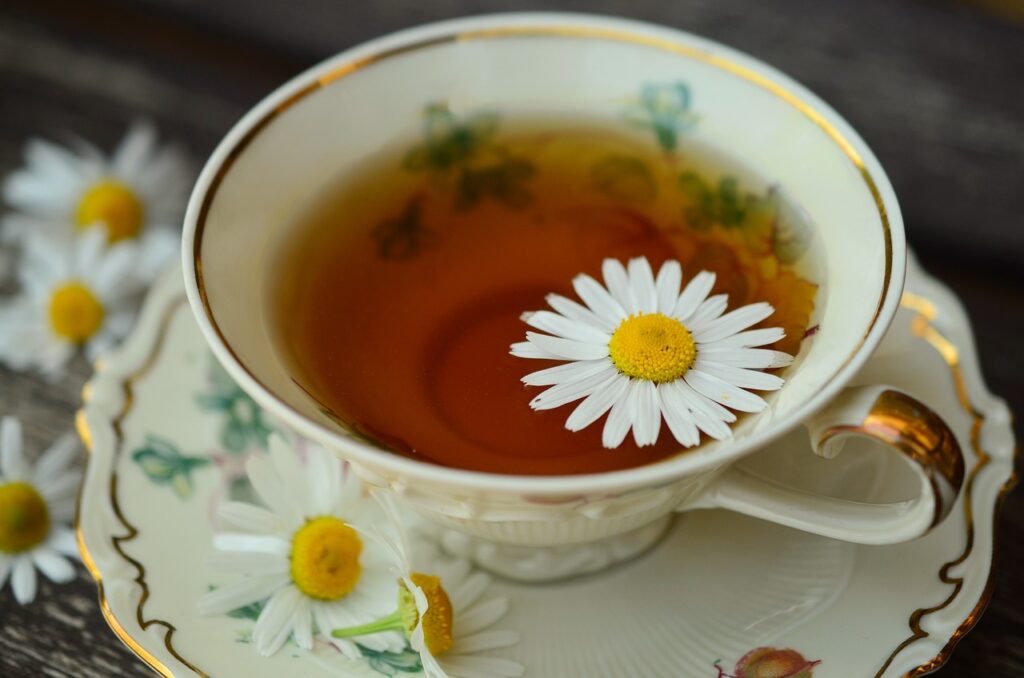
Chamomile was regarded as a sacred flower in ancient Egypt, offered to the sun god Ra.
In ancient Rome and Greece, its fragrance and beauty also earned it a special place.
In English gardens, particularly during the Elizabethan era, chamomile was widely planted. Gardeners appreciated how its fragrance spread when stepped upon, and it became an essential plant valued for both beauty and practicality.
Gardening Advice
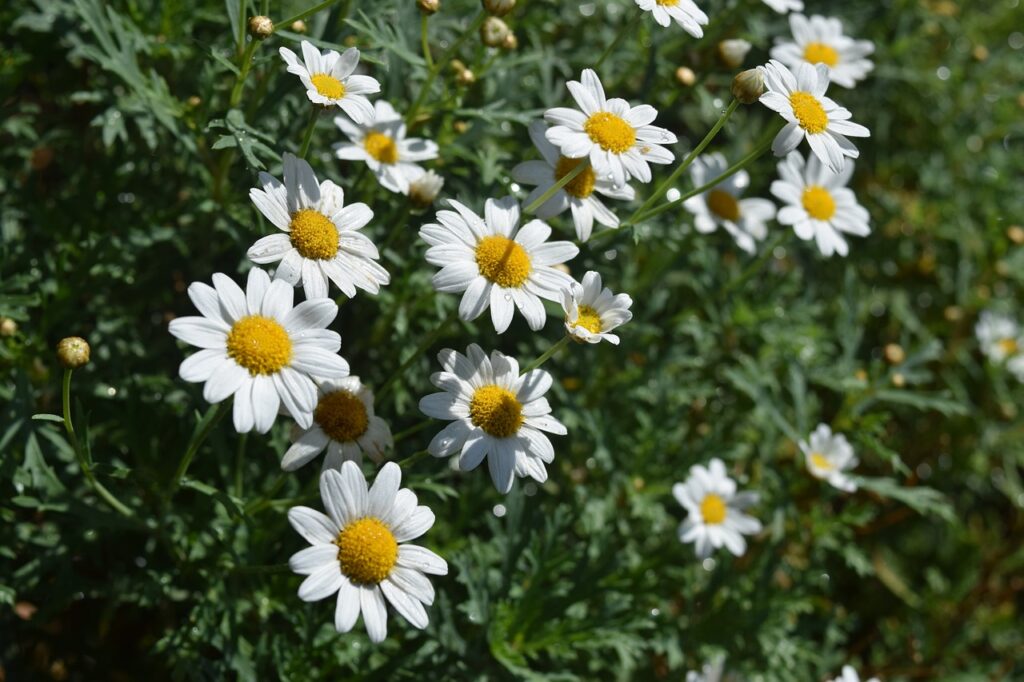
Cultivation Guide
Chamomile prefers sunny locations but can also grow in partial shade. It thrives in moderately moist soil, shows good drought tolerance, and is easy to grow even for beginners.
Spring is the best time for planting. After germination, thinning seedlings early improves airflow and prevents disease. I water thoroughly when the soil surface becomes dry, while avoiding overwatering.
Regularly picking the flowers after blooming encourages continuous new blooms, allowing enjoyment for a long season.
Environment and Conditions
Chamomile prefers well-drained sandy soil. While it can adapt to acidic soil, slightly alkaline soil is ideal.
German chamomile easily self-seeds, so once planted, it can return naturally the following year. It is also cold-tolerant, surviving through winter, though strong frost requires caution.
Conclusion
Chamomile, with its delicate blossoms and gentle fragrance, has long been cherished by many. Widely cultivated in European gardens and herb plots, it is ideal for creating natural and relaxing spaces.
With proper care, chamomile can be enjoyed at home for many years, and I highly recommend adding it to your garden.


